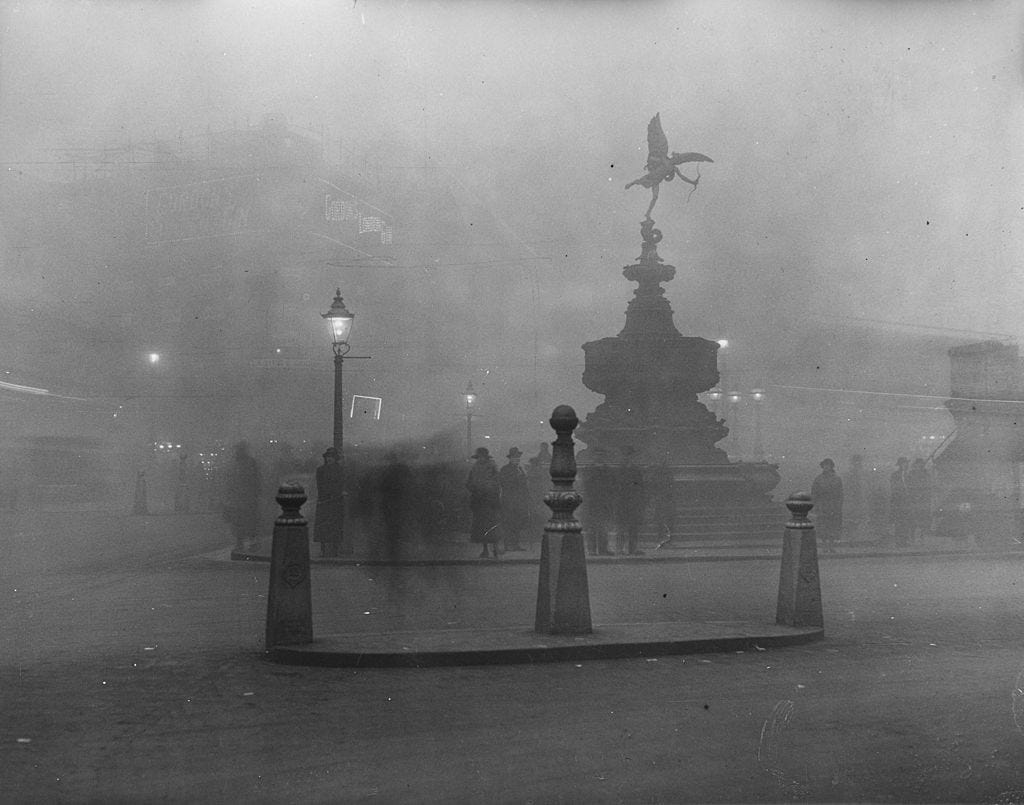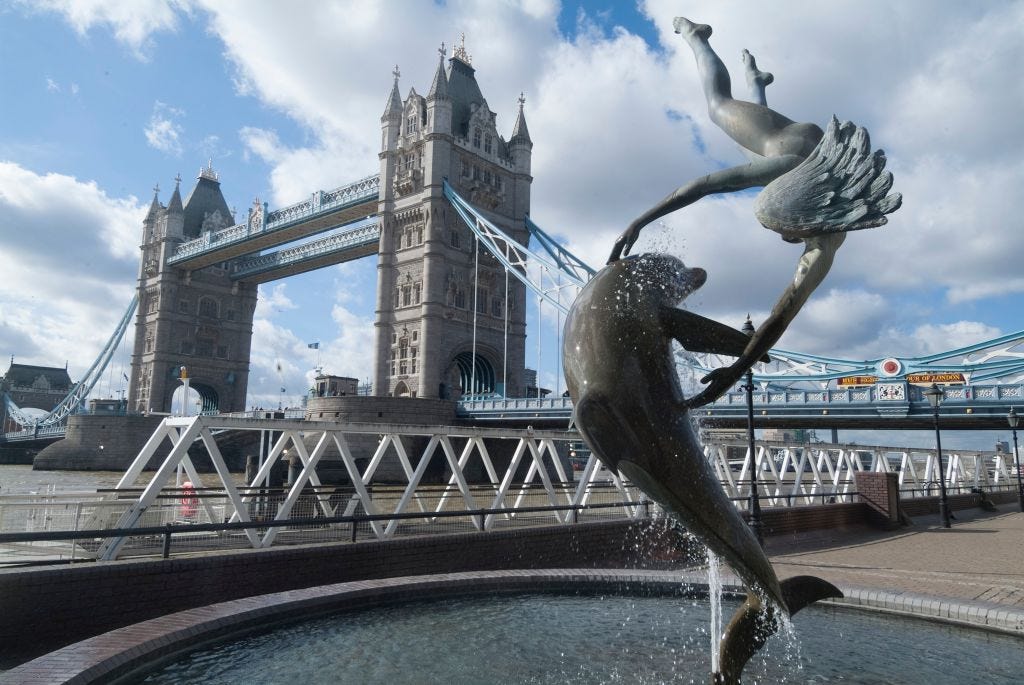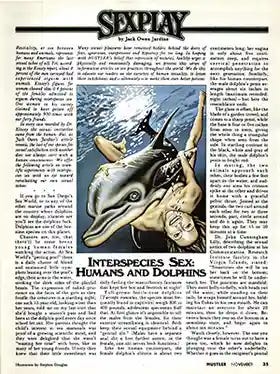It’s a slightly personal and esoteric edition of LiB today, but hopefully you’ll appreciate the change of pace (although we should warn you that there are a few references to suicide in this issue).
One other note to remind you that we are taking a quick break over Easter, so there will be no issue on Saturday or Monday.
Recently we’ve been thinking a lot about Gregory Bateson (pictured above).
Bateson was an anthropologist, social scientist and semiotician who had very little to do with London really, but he did write a lot about the importance of having a “contemplative respect for the mysterious interconnectedness of the world” and he was fond of saying things like:
“All actions and events have communicative aspects, as soon as they are perceived by a human being; it implies, furthermore, that such perception changes the information which an individual processes and therefore influences him.”
When we read something like that it reminds us of one of our favourite things about London: how the stories we tell ourselves as we walk around its streets tend to evolve and shift as we ourselves grow and bring our own experiences to them.
If that doesn’t make much sense right now, maybe it will after we tell you a little bit more about the fascinating life of Gregory Bateson and how knowing more about him has changed the way we think about two of London’s most recognisable statues.
The Shaftesbury Memorial Fountain (aka ‘Eros’)
One of the reasons we’ve been thinking a lot about Bateson recently is because next Friday it will be a hundred years to the day that his older brother Martin walked into Piccadilly Circus, pulled out a revolver and shot himself in the head while standing underneath the statue of ‘Eros’.
He was 22 years old.
Those inverted commas around the word Eros are there because, as any London nerd will be glad to tell you, that’s not actually a statue of Eros aiming his empty bow down Shaftesbury Avenue. It’s his brother Anteros, the god of requited love. That fact only makes Martin Bateson’s choice of the spot even more tragic, because it was after being rejected by the woman he loved that Martin chose to take his own life in such a public way.
Love wasn’t the only factor though.
Martin and Gregory were the sons of William Bateson, the acclaimed scientist who was most well known for coining the term ‘genetics’. There was a third son, the eldest John, but when he was killed towards the end of War War One, the duty of carrying on the family legacy fell on the two remaining boys.
Martin defied his father by turning his back on science to pursue a career as a poet. Something which caused terrible arguments between the two and undoubtedly led to him setting out to Piccadilly Circus on the date of his late brother’s birthday with a revolver in the pocket of his overcoat.
That was 22 April, 1922. Gregory Bateson wasn’t even eighteen years old, but he was suddenly an only child and carrying the full weight of his family’s name squarely on his shoulders.
Over the next fifteen years Gregory somehow managed to not only overcome the tragedy of losing two brothers within four years, but also exceeded any expectations that had been placed on him. After receiving a Bachelor of Arts in biology at Cambridge he went to Australia to lecture in linguistics at the University of Sydney before returning to Cambridge to become a fellow of St. John’s College. In the years running up to World War II he was to be found doing anthropological work in New Guinea and Bali.
It’s worth taking a quick detour here to tell you that, at the outbreak of the Second World War, Bateson served in the Office of Strategic Services, the US intelligence agency set up to to coordinate espionage activities behind enemy lines (after the war was over the organisation would become known as the CIA). While there he designed so-called ‘black propaganda’ radio broadcasts and was deployed to countries like Burma and Thailand to “help foster discord among enemy fighters”.
Although Bateson wasn’t stationed in London, there is a connection to the city. The agency’s first overseas outpost was in London, at number 70 Grosvenor Street (just a ten minute walk from Piccadilly Circus) in what has since been described by one of the men who worked there as a “bland, grey, nondescript” five-story building just round the corner from the U.S. Embassy. In this building agents would attend ‘spy school’ where they would be trained in the use of gadgets such as wiretaps, compasses disguised as buttons, and cannabis extract-laced cigarettes designed “to induce incessant chatting”. There will be more on the use of drugs to encourage communication shortly…
Girl with Dolphin (aka ‘Margaret and Peter’)
After the war Bateson went back to the US where he developed the double-bind theory of schizophrenia. By the 1960s he was running a “secret laboratory” on the Caribbean island of St Thomas that had been funded by NASA with the goal of learning how to speak to extraterrestrial life forms (hey, it was the Sixties). The lab was the brainchild of the neuroscientist, Dr John C. Lilly who was looking to further his research into ‘interspecies communication,’ ideas which he’d first addressed in his book, Man and Dolphin.
While Bateson was at the lab to study how dolphins communicated with each other, Lilly was far more interested in “nurturing closer relationships between man and dolphin” and part of that involved trying to teach dolphins to speak English.
Lilly’s experiments at the lab have since become the stuff of legend (thanks in no small part to the fact that he was also exploring the potential of LSD, a drug he’d been introduced to in Hollywood by the producer of the Flipper movie). But it’s the story of the young lab assistant, Margaret Lovatt which overshadows the whole operation.
Margaret arrived at the lab in her early 20s and, despite having no formal training, quickly became integral to the operation. She formed tight bonds with the three dolphins that were kept there and eventually convinced Lilly to flood the laboratory so she could live full time with a young male dolphin named Peter while teaching him to communicate with her in English:
In the November of 1978 Hustler magazine ran a sensationalised account of what had happened at the laboratory, revealing that Lovatt had been having ‘sexual encounters’ with Peter, ‘manually relieving’ his natural urges so that he didn’t get distracted during their lessons.
It’s unlikely that the sculptor David Wynne knew anything about Lilly’s lab or the work Margaret Lovatt was doing there when he started work on his ‘Girl with Dolphin’ sculpture in the early 70s. But if you go to the end of Tower Bridge and look at the naked woman seemingly defying gravity as she swims down to meet the bronze dolphin suspended beneath her, it’s hard not to make the connection once you know the story
The connection grows even stronger when you find out that Wynne researched his subjects first hand and his dolphin pieces were “based on hours of swimming with the animal.”
There are more connections if you go looking for them. Just like Anteros in Piccadilly Circus, Wynne’s ‘Girl with Dolphin’ also stands in the middle of a fountain and it also becomes tainted by tragedy once you know Bateson’s story.
As John C. Lilly became more fascinated with LSD he began injecting the dolphins with the drug to see if it would help with their ability to communicate. When that didn’t work Lilly became disenchanted with the project, the NASA funding was cut, Bateson quit and the lab closed.
The dolphins were moved to Lilly’s other lab, in “a disused bank building in Miami,” where they were kept in small tanks with little or no sunlight. As a result Peter the dolphin quickly deteriorated and, after just a few weeks in the new lab, he committed suicide by drowning himself.
Lilly went on to experiment with other drugs, including ketamine, which led to his belief in a cosmic entity called the Earth Coincidence Control Office, or ECCO for short. And if you can’t read the name ECCO without thinking of pixelated dolphins then you should go read this article, although that might lead you to this video and then you may never be the same again.
David Wynne went on to have a very successful career which included creating works such as the lion and unicorn that adorn the gates to Hyde Park and the design for the 1973 50p coin. He also made another dolphin statue, ‘Boy With Dolphin’ which you can find on Cheyne Walk in Chelsea. The model for that work was Sir David’s son; Roland ‘Roly’ David Amadeus Wynne, who went on to form the band Ozric Tentacles with his brother Edward. In 1999, aged just 35, Roly took his own life. There’s now a dedication to him on the base of the statue.
As for Gregory Bateson, he continued to teach and write, mainly at the University of Calfornia. He died in the summer of 1980, aged 76, in the guest house of the San Francisco Zen Center.
Eight years before he had published probably his most well known work, a collection of essays entitled Steps To An Ecology Of Mind. In there you’ll find this quote, which if you’re in the area of Piccadilly Circus on Friday 22 April, you may find written on a card left at the base of the Memorial Fountain:
“The fact of our imperfect understanding should not be allowed to feed our anxiety and so increase the need to control. Rather our studies could be inspired by a more ancient, but today less honoured, motive: a curiosity about the world of which we are part. The rewards of such work are not power but beauty.”







